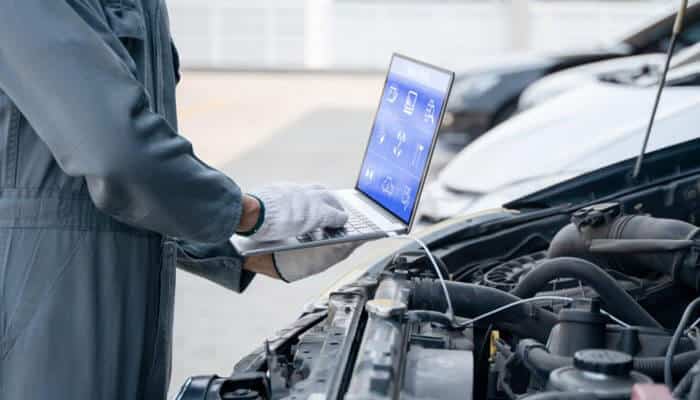Advancements in vehicle technology are transforming both road safety and the way personal injury claims are managed.
According to J.P. Morgan, cars have become safer over the years, largely due to passive safety systems like seatbelts and airbags. During the last decade, however, active safety features like automatic braking, stability control, and lane departure warnings have cut collision risks significantly.
This technological leap is essential, as J.P. Morgan Research notes that human error causes 97% of road accidents, while mechanical failure accounts for just 3%. Looking ahead, the rise of autonomous driving and the increasing connectivity of the vehicle fleet promise further enhancements to road safety.
In this evolving landscape, black box data, also known as event data recorders, has become a critical tool in personal injury claims. These devices capture objective, real-time information about vehicle behavior before, during, and after accidents, transforming how victims pursue justice.
This article explores the role of black box data in modern personal injury claims. We’ll examine its impact on establishing liability and its broader influence on road safety and legal outcomes.
Understanding Black Box Technology in Vehicles
Black boxes, also known as Event Data Recorders (EDRs), are vital electronic devices that act as a vehicle’s digital witness. Found in many modern cars and commercial trucks, they continuously track key operational data such as speed, brake usage, steering input, and seatbelt activity.
In the event of a collision, this information provides a precise record of the vehicle’s actions, removing the ambiguity often associated with human testimony. The true value of EDR data lies in its reliability for reconstructing accident timelines and determining liability.
The adoption of this technology is growing rapidly. According to Fortune Business Insights, the rising use of vehicles, particularly in congested urban areas, is fueling demand in the automotive black box market.
Cost-effective EDR solutions help monitor driver behavior, improve safety, and provide crucial records for insurance claims. Regulatory mandates and the need for accountability in city environments further boost adoption, driving significant market growth.
How Black Box Data Strengthens Personal Injury Claims

In personal injury claims, liability and damages often hinge on proving negligent or reckless behavior. Conventional ways of establishing fault, such as photographs, witness accounts, and police reports, are now being supplemented and questioned by black box evidence.
Black box data can:
- Establish the precise speed at the time of impact.
- Confirm or refute the application of brakes before a collision.
- Provide evidence regarding hours of service compliance for commercial drivers.
- Show sudden acceleration or deceleration patterns that may indicate unsafe driving habits.
This evidence is particularly transformative in cases where there is a dispute over fault. For example, in a multi-vehicle collision where several parties claim innocence, black box data can pinpoint which vehicle engaged in dangerous maneuvers first. This helps clarify responsibility and cuts through conflicting accounts.
The Importance of Legal Expertise in Handling Black Box Data
Black box data offers invaluable factual evidence in personal injury claims, but effectively interpreting and leveraging it requires specialized legal knowledge. This is particularly true for commercial vehicle accidents, where the data is more complex, and the stakes are higher.
In these situations, consulting a truck accident lawyer promptly can be essential. Attorneys experienced in accident litigation understand how to preserve, access, and analyze black box information before it is lost or overwritten.
According to Tim Mazzela, the hours and days following a truck accident can determine what your case is actually worth. Dashcam footage, black box data, logbooks, and load records can be erased unless someone ensures their preservation.
A truck accident lawyer safeguards this evidence and works with forensic experts to decode technical details and identify regulatory violations. They use this information to demonstrate negligence, turning digital data into a strong, well-supported claim.
Impact on Settlement Negotiations and Trials
The introduction of black box data into personal injury litigation has significantly influenced both settlements and trial outcomes.
In settlement negotiations, attorneys can use this evidence to justify higher compensation, arguing that the data conclusively proves negligence. Conversely, for defense teams, black box data can sometimes be used to diminish a claim by showing the plaintiff’s contributory faults. Either way, the technology reshapes the bargaining dynamic by providing undeniable technical proof.
At trial, black box evidence allows juries to see beyond conflicting testimonies. When presented with computerized data and expert analysis, jurors gain clarity on the sequence of events and the severity of negligence involved. This often results in more consistent and evidence-driven verdicts.
The impact of EDRs reaches beyond legal proceedings into the financial aspects of risk assessment. This concept of using driving data for accountability is reflected in the insurance industry.
Black box car insurance, or telematics insurance, as noted by Investopedia, tracks a policyholder’s driving behavior to evaluate risk accurately. This shows how the technology impacts legal liability while reshaping financial and personal accountability on the road.
Challenges and Legal Complexities
While black box data is a powerful tool in personal injury cases, it brings several legal and ethical challenges. Issues of privacy, consent, and data ownership often arise, and in some jurisdictions, accessing EDR information without permission may require a court order.
Misinterpretation of black box readings is another concern. Without proper expertise, incorrect analysis can jeopardize a case. Legal teams must therefore collaborate with forensic analysts who understand both the technical and legal dimensions of the evidence. Timely action is also critical, as companies may attempt to overwrite or delete data following an accident.
According to IBM, similar challenges exist in autonomous vehicles. Complex AI models make real-time driving decisions, but when these systems fail, it can be difficult to determine why. Developers often supplement AI with radar or lidar to understand situations, causing errors. This illustrates the broader difficulties in interpreting technical data for accountability and safety purposes.
FAQs
What data does a black box collect?
A black box, or Event Data Recorder (EDR), collects critical vehicle information. This includes speed, brake application, steering input, seatbelt usage, engine performance, and sudden acceleration or deceleration. The data captures moments before, during, and after a collision, providing objective evidence for accident reconstruction and analysis in personal injury claims.
How can an accident lawyer help with black box evidence?
An accident lawyer’s primary role is to promptly preserve black box data from being overwritten, often by obtaining a court order. They then work with forensic experts to legally extract, interpret, and authenticate the data to prove negligence or support the injury claim.
Can black box data be used in court?
Yes, black box data can be used in court as objective evidence in personal injury and traffic cases. It helps establish facts such as vehicle speed, braking, and driver actions before a collision. Courts often rely on this data to clarify fault, support liability claims, and resolve disputes.
Black box data has emerged as a game-changing tool in the realm of personal injury claims, offering undeniable insights into accident events. For victims, especially in truck collisions, this technology can be the difference between a contested case and a decisive liability finding.
With the guidance of experienced lawyers, claimants can harness this evidence to build stronger, more persuasive cases. While challenges remain, the trajectory points towards a future where fact-based, technology-backed claims redefine justice in road accident litigation.



